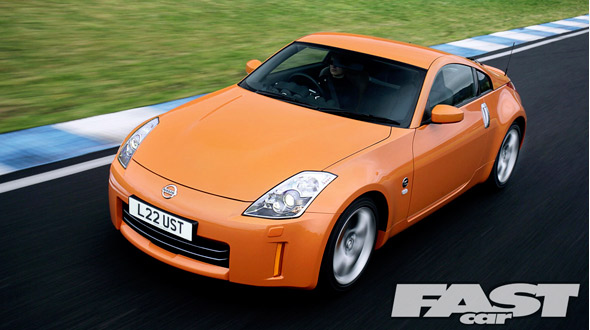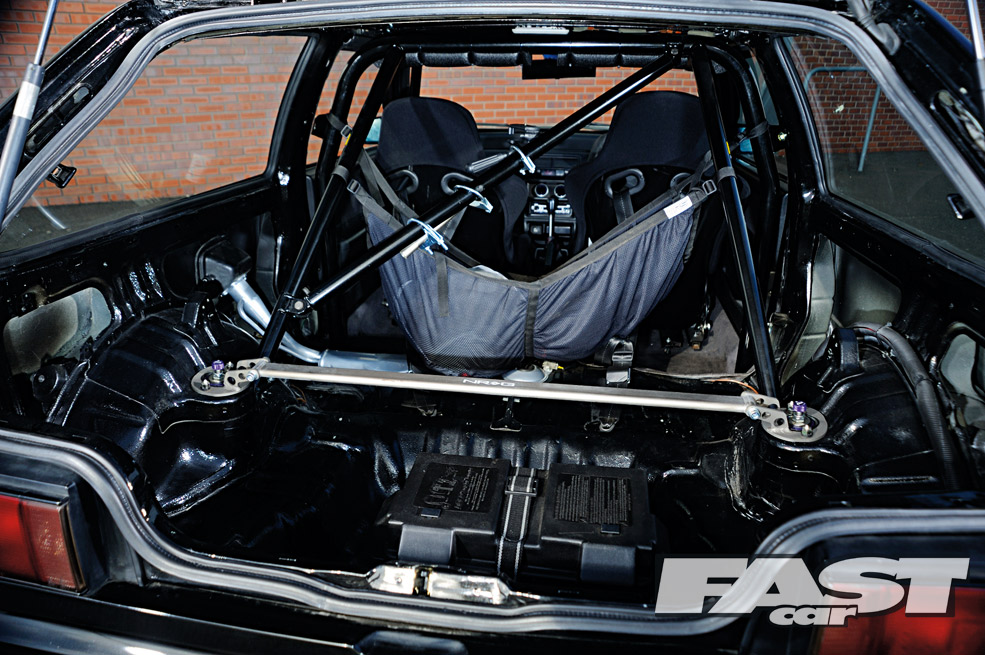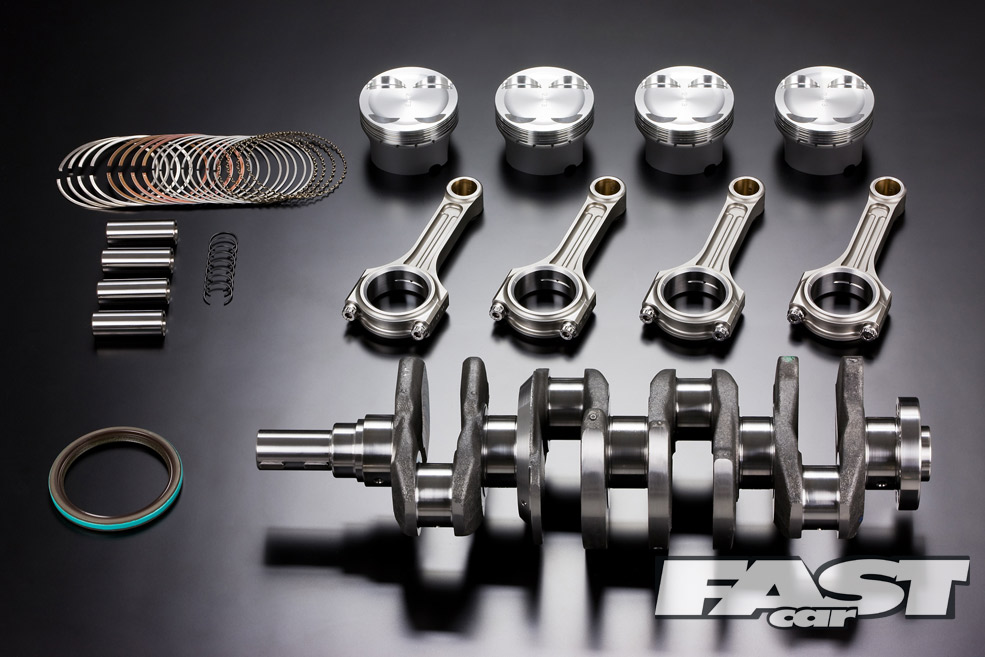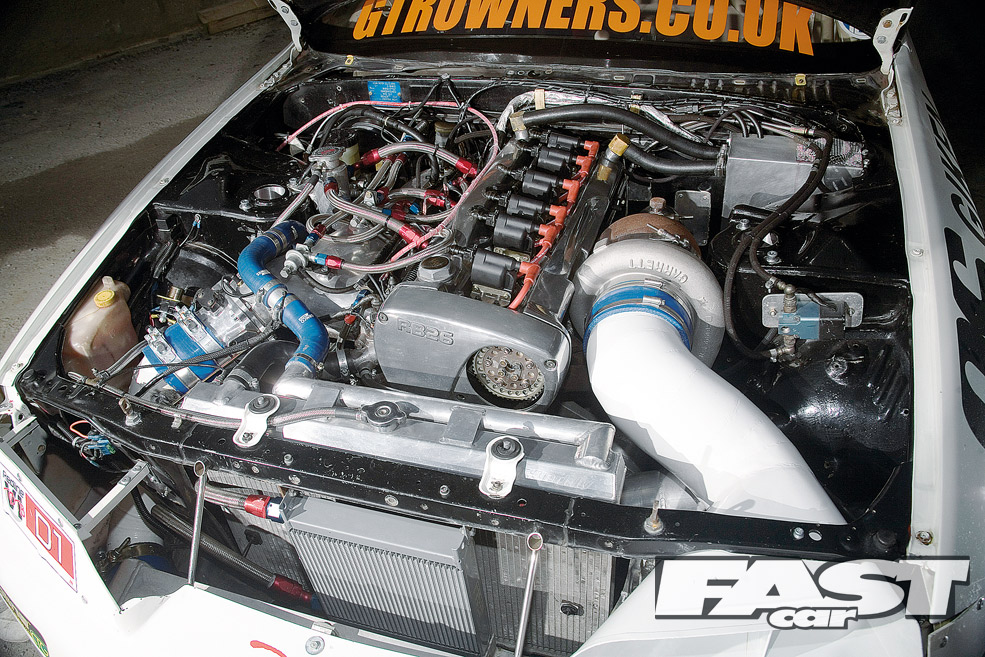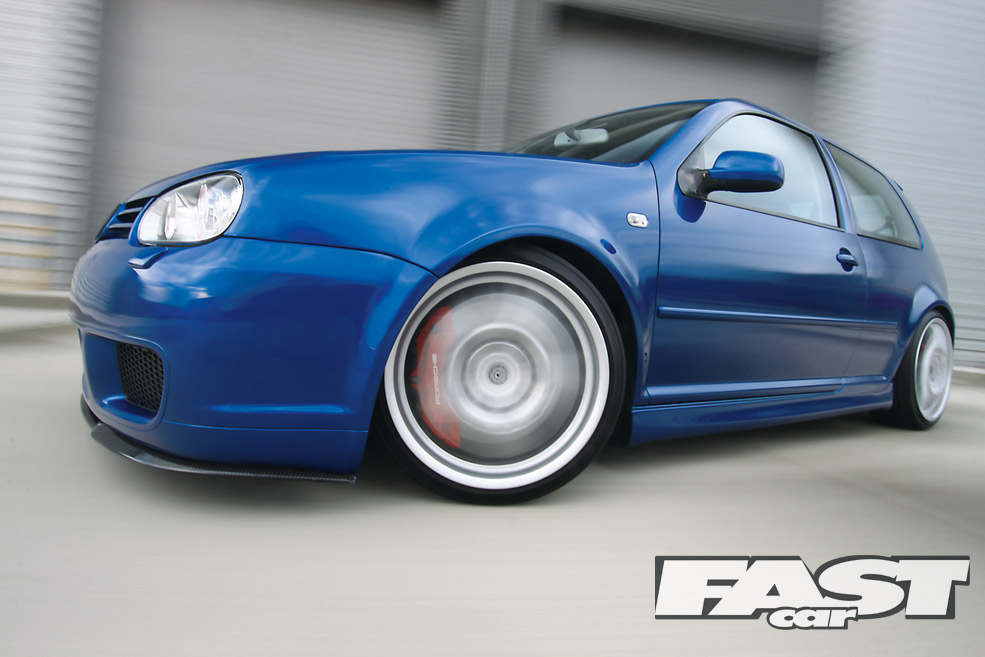
How can you make your car faster? Well like this..
We all want to go faster, every one of us – even you over there, sitting at the back trying to look inconspicuous. But the big question is, how can I make my car faster and what’s the best way to do it? And what are the best ways to spend your hard-earned?
Well, after days of office arguing we’ve come up with what we think are officially the ten best ways to make your car faster.
So read on and check out the best ways, what they do, how hard they are, and what they cost.
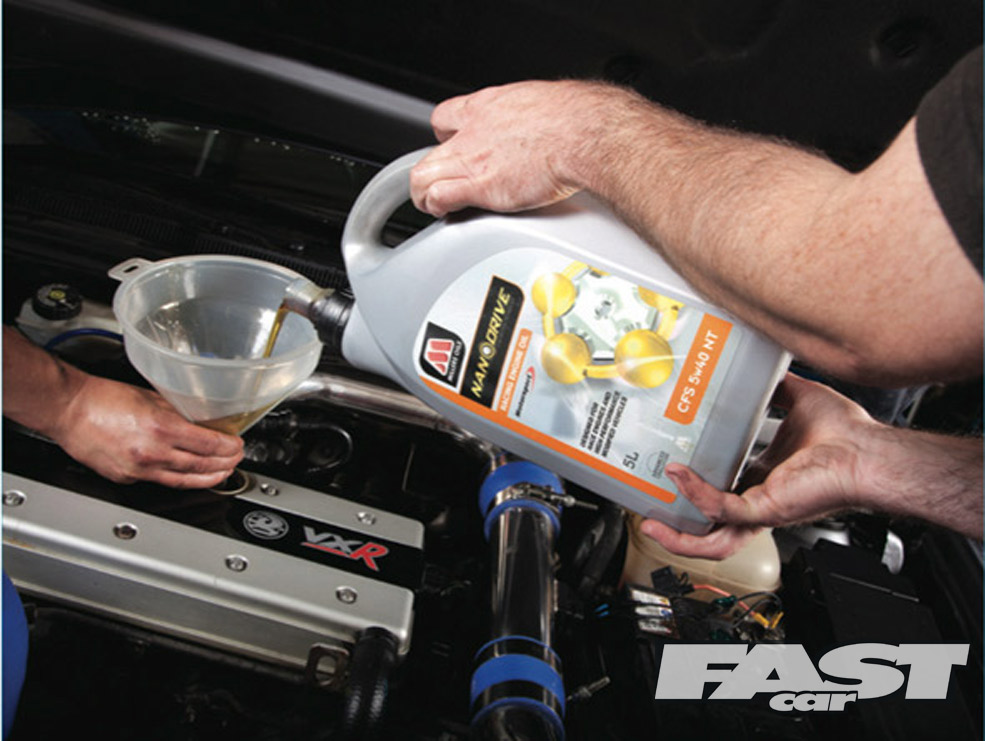
1. LOOK AFTER IT!
Regular servicing, including changing the various fluids and filters, is vital if you want to keep your car delivering the performance it was designed to give.
Not only that, but on tuned motors it’s a good idea to take your car to a respected tuner once a year so, as well as regular servicing, they can check and adjust fuel and boost pressures, ignition timing, and if necessary, the mapping of the car’s ECU to keep the car running at peak performance.
It’s not unusual for some cars to need quite large adjustments, even when they seem to be running perfectly fine. In the past we have seen gains of nearly 30bhp, just from a dyno operator adjusting the ignition timing to its optimum.
COST:
Servicing: £50-£300
Rolling road/dyno tuning:£150-£500
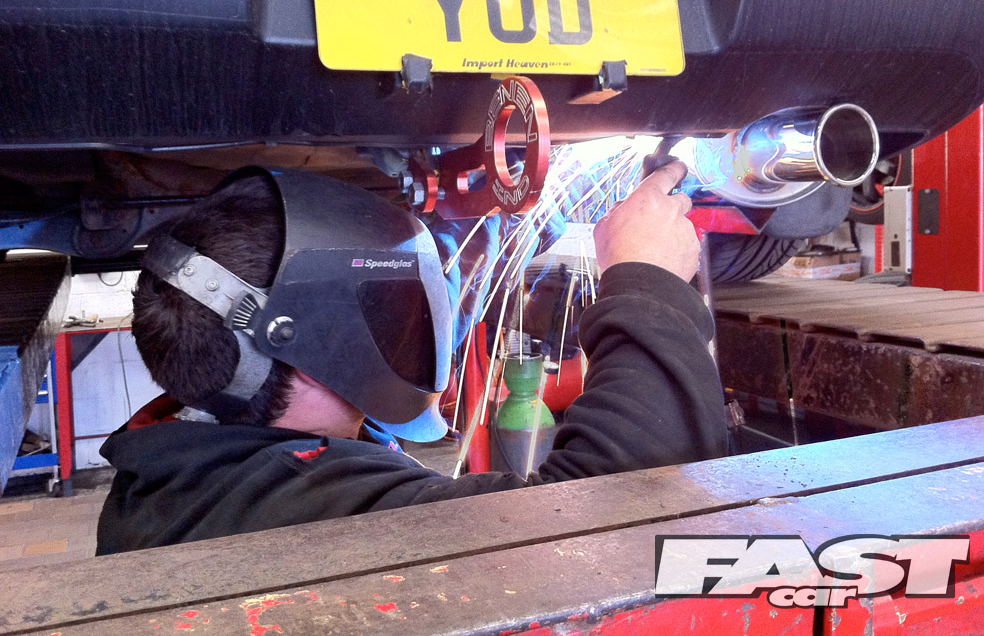
2. LET IT BREATHE!
Almost all cars come with restrictive inlet and exhaust systems as standard, mainly to cut down on noise, but also to deliberately reduce power levels for economy and reliability reasons. Catalytic converters are very restrictive too.
Because of this, it’s not uncommon to gain 5-10 percent extra power from a full exhaust system, decat pipe and induction kit on a modern car. Filter and exhaust combos don’t cost a fortune either, so should be the first performance mods you buy.
A performance ECU chip is also a simple mod, improving power and drivability for relatively little cash. You’ll only get small gains on a N/A car, but turbocharged cars can sometimes give upwards of 25bhp.
COST:
Exhaust: £150-£500
Filter: £55-£200
Performance chip: £250-£500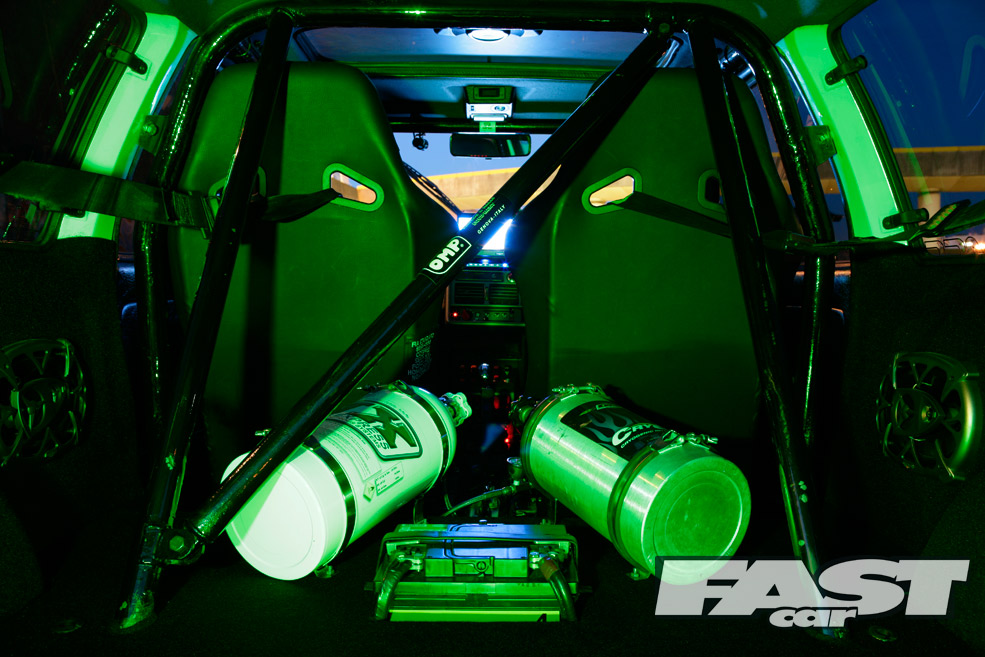
3. GAS IT!
Once you’ve fitted an exhaust and filter, tuning gets more expensive, especially on N/A engines. One exception to this is nitrous, which can give huge gains for the money you have spent.
Nitrous is an oxygen-rich compressed gas, which, when injected into the engine with the corresponding amount of extra fuel, gives an immediate boost in power.
Most standard production cars can happily withstand a 50bhp increase in power via nitrous with no ill-effects, and that’s enough to make any car a load faster. Remember the gas doesn’t last long, so you’ll need to pay for re-fills – approx £55 for an 11lb bottle.
COST:
Good Branded Nitrous kit: £500-£800
4. STRIP IT OUT
You’ve probably noticed the difference in performance of your car when you’re on your own in it and when it’s fully loaded, especially in small cars.
Well, apart from not giving fat birds lifts, another good plan for more performance is to strip the car out. Things such as seats, interior trim, ICE, sound deadening, the spare wheel and air conditioning systems all weigh a hell of a lot. With them removed you’ll not only have faster acceleration, but also better braking and handling, too.
However, the best thing about it is that it costs bugger all! Once you want to spend some money you can replace your standard seats with lightweight fibreglass or carbon fibre buckets, glass windows with Perspex, and steel panels with fibreglass or carbon ones.
COST:
Stripping interior: Nothing!
Fitting lightweight panels, seats,
windows, etc: £150-£1,000+
5. STROKE IT
This is neither cheap nor easy, but increasing the capacity of your engine is always a great way to improve all-round power and torque. This is done by totally rebuilding the engine with a new longer-stroke crankshaft to increase the swept capacity of the engine.
There is a double advantage when this is done to a turbocharged motor, because when you increase the capacity you don’t just get the aforementioned gains in power and torque, but a bigger engine means more exhaust gas too. This means your turbo will spin up much sooner, and also enables you to run a much bigger turbo than you could on the smaller engine, but without giving any more lag.
The only disadvantage is that some stroker kits can make your safe rev limit slightly lower, but the fact the new stroker crank is often far stronger than standard means the safe rev limit can sometimes actually be higher.
Japanese cars have the most widely available stroker kits, but they are common enough for most other types of engines, and if you’re willing to pay for it, many specialist engine component manufacturers will design and build a long-stroke crank and conrod setup for your car.
On some cars it’s also possible to use the larger bottom ends from other models to increase the capacity. Examples of this are the Zetec bottom end that RS Turbos often use, 2ltr bottom ends on Mk2 Golf GTis, and RB30 bottom ends on Skylines.
COST:
Full stroker kit: £1,000-5,000+
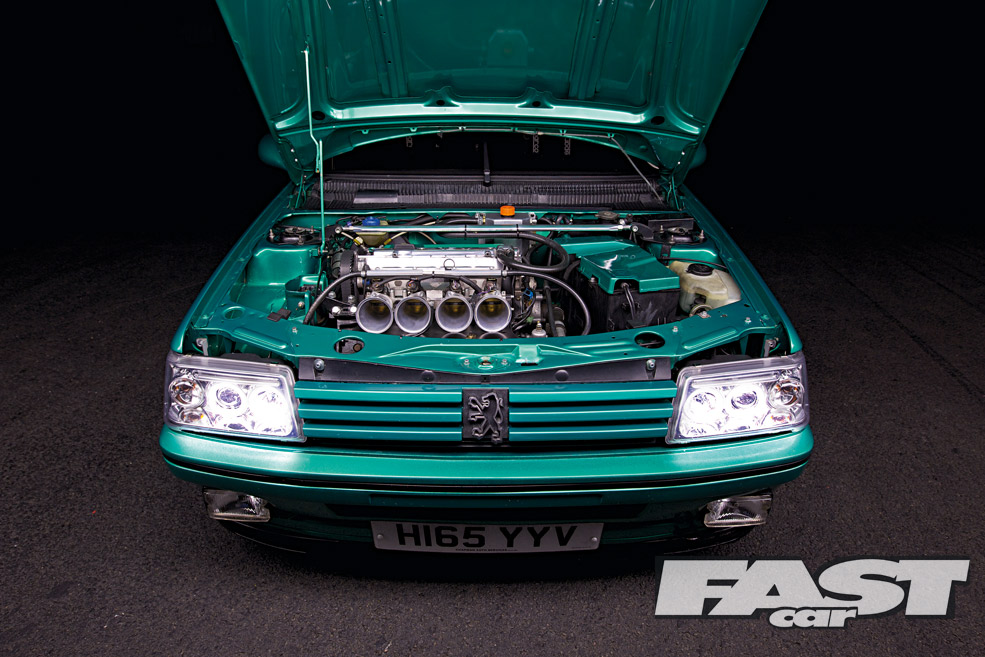
6. ENGINE TRANSPLANT
What better way to make your car quicker than to rip out its wheezing old lump and fit something bigger and more powerful?
Some engine swaps are easy, where it’s just a drop-in replacement, but really the only limits to the swaps are your imagination and your wallet! And who’s to say the engine has to go back in the same place? You could go rear-engined, or if you’re really nuts fit twin engines!
Common transplants are VR6 and 1.8 Turbo engines into Mk2 Golfs, Zetec engines into CVH-powered Fords, S14 SR20 and Skyline engines into S13 200SXs, Mi16 and GTi-6 engines into Pug 205s, and so on.
As well as the engine you will need the wiring loom, ECU, and all that sort of thing from the donor car, and often the gearbox and other parts, too. It’s not the most straightforward mod in the world, but can totally transform your car and can even work out cheaper than tuning your existing engine.
COST:
Engine transplant: £1,000-£10,000+
7. BLOW IT
Engines give power by compressing and igniting the fuel/air mix inside the cylinders, and the more that’s in there, the more power you will get. Well, the best way to get more in there is to force it in under pressure with a bloody great fan!
Turbo and supercharger conversions are never cheap, but if you want the maximum amount of power possible from your engine, it’s really the only way to go.
On a normally aspirated engine even 100bhp per litre is considered highly tuned, and 150bhp per litre is usually reserved for mega-budget race engines. But in turbo engines, 100bhp per litre is considered ordinary, and upwards of 250bhp per litre is possible from the majority of engines.
COST:
Turbo/supercharger conversion: £1000-£10,000+
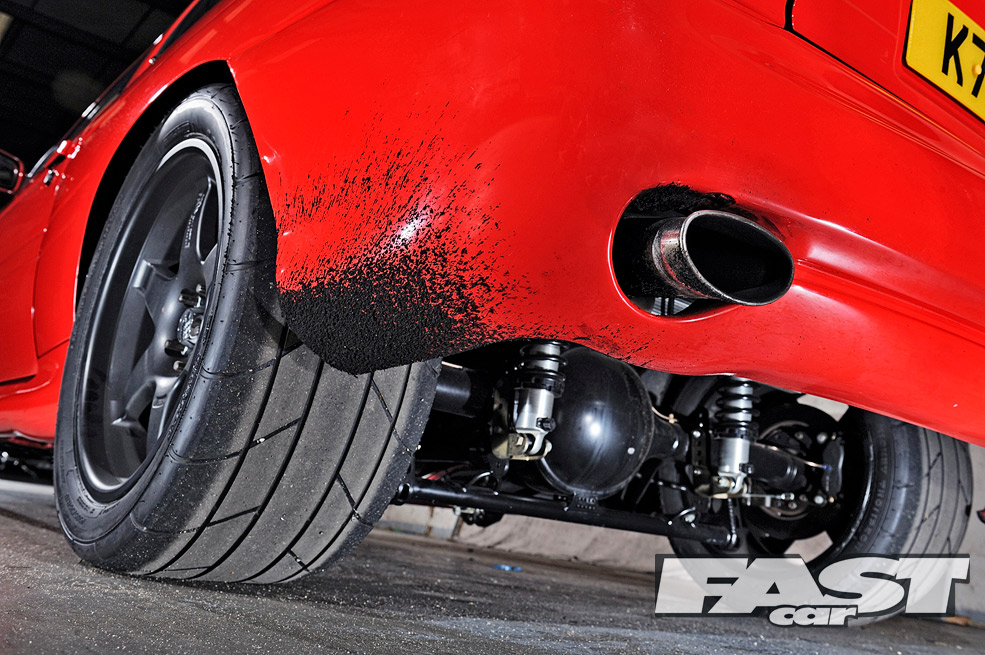
8. DIFF IT
This is hard to imagine unless you’ve experienced it, so you will have to take our word for it, but lowering the gearing of your car (either with a close-ratio gearbox or low-ratio diffs) will drastically improve your car’s acceleration, in exchange for a lower top speed.
Often this can be achieved by swapping your gearbox or diffs with a unit from a different model from the same company, but if there are none available there are many aftermarket transmission specialists than will be happy to help you out.
Prime examples of how low gearing massively helps acceleration are Renault 5 GT Turbos, modern WRC cars, and the famous MINE’s R34 Skyline GTR demo car.
COST:
Changing gearbox or diff ratios: £250-£6,000+
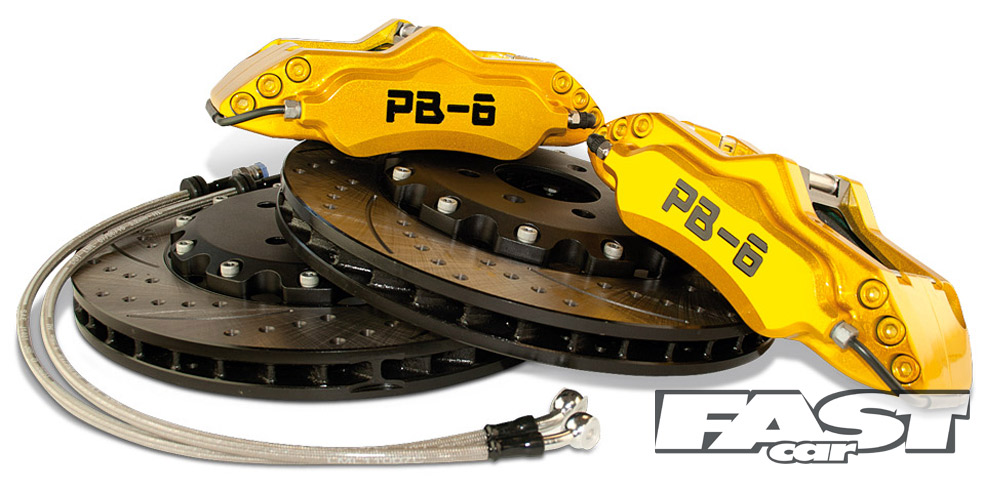
9. STOP IT
Performance isn’t all about power and acceleration. If your brakes are pants then you’ll be off the accelerator and jumping on the stoppers far earlier than you would with a good brake setup, and over a long stretch of road or track this will make you significantly slower overall. If you’ve got good anchors you can stay on the gas until the last minute, maximizing acceleration time and minimizing braking time, improving your average speed and making you faster in the long run.
Best of all, basic brake upgrades such as better discs and pads are pretty cheap, so you don’t need to break the bank to achieve some big performance gains. The most basic mod would involve some uprated brake pads; this can be a great upgrade and often only costs about 50 quid.
The next step is some drilled or grooved standard-size discs, and again it’s quite a cheap and straightforward upgrade. If you want a serious brake setup then many companies can do you a big brake conversion that consists of massive discs and equally huge calipers, giving unbeatable stopping power.
Discs, pads, and calipers aren’t the only important brake parts. Uprated fluid, brake lines and braces to keep the master cylinder steady are also important and fairly cheap upgrades that can be done.
COST:
Brake upgrades: £50-£2,000
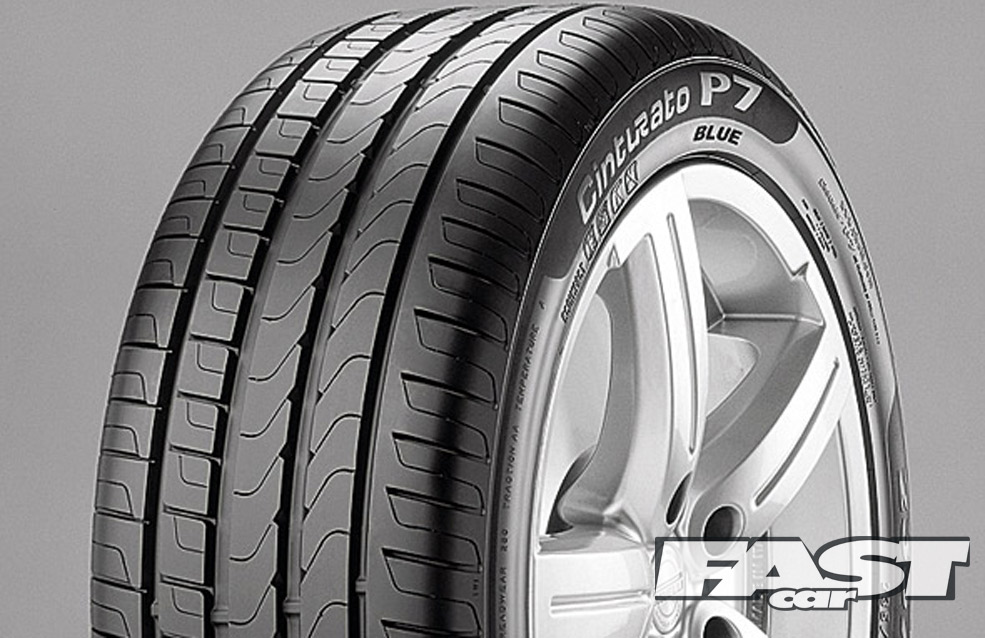
10. GET TYRE’D!
Having loads of power is no good if you can’t transfer it to the road. You might have 300bhp, but when a standard car leaves you for dead as your car just sits there in a cloud of wheelspin, it’s pretty pointless isn’t it?!
Sticking with standard-width normal road tyres won’t do much good when you’ve seriously bumped up the power, so it’s time for some fat, sticky tyres. There’s a huge range available, and not only will the extra grip help your acceleration, it will improve your cornering speeds, and reduce braking distances too.
Many modern hot hatches can take 225-wide tyres, and performance RWD
cars can often take 255-wide rubber or more on the rear, so there are no excuses to run on standard-width tyres!
Companies such as Yokohama make specialist track tyres that give a massive amount of grip, and BF Goodrich make low-profile drag tyres that will give you immense standing start grip, though they don’t last long.
COST:
Per tyre: £70-£200

